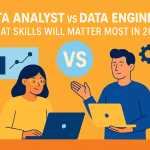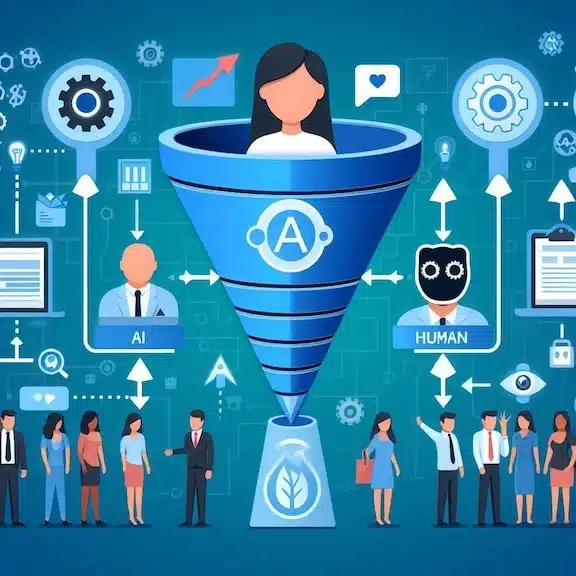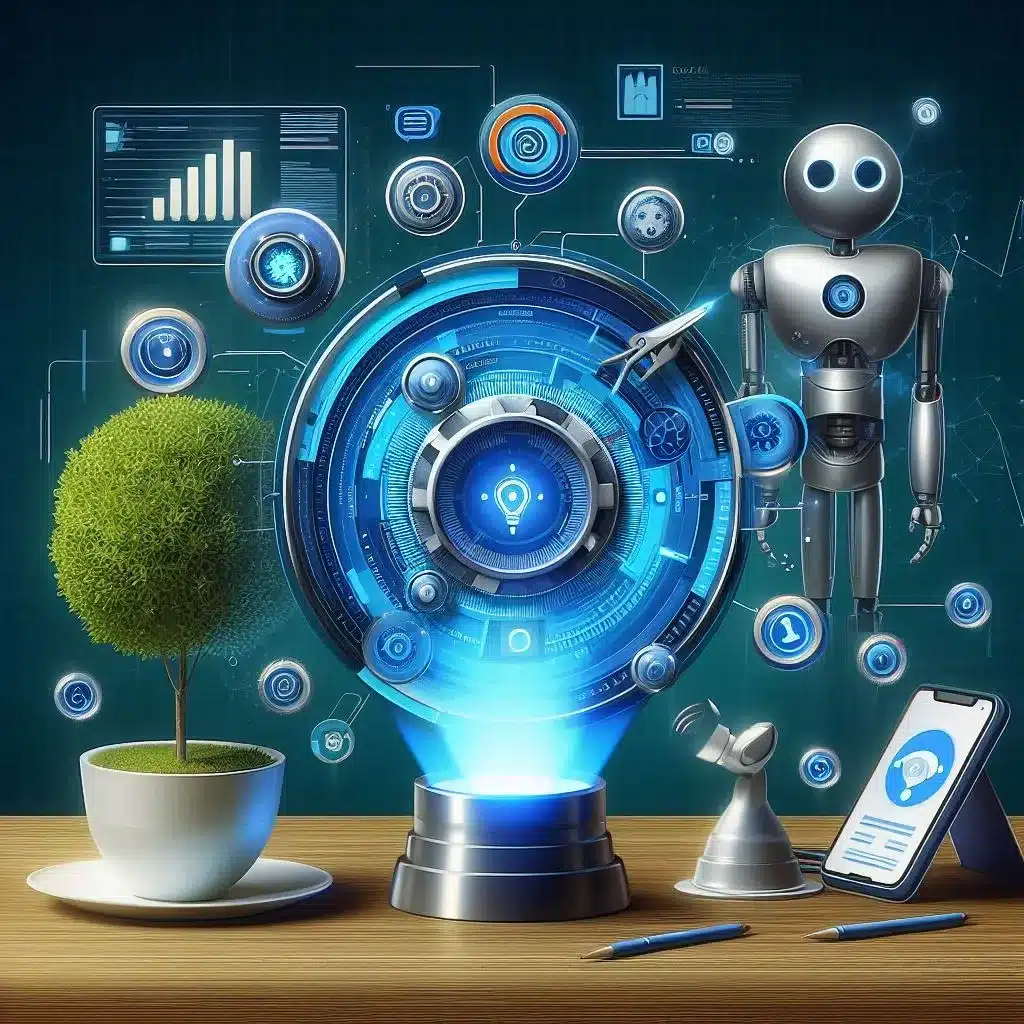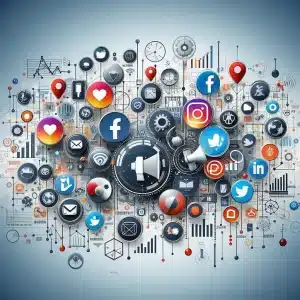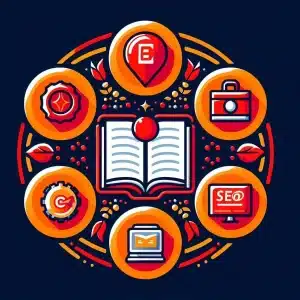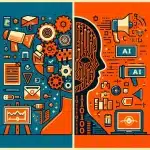
Should you create marketing content for AI or for humans?
AI vs human content, the debate rages on. AI generated content has been flooding our online spaces for a couple of years, and the results are mixed. Some engage with it, while others criticise and mock it. While some brands gain visibility, others struggle to connect with their target audience. Yet, the reality is that whatever content you may create as a marketer will be consumed by bots and people and needs to be palatable to both. So how can marketers find the right balance? This blog looks at what your hybrid audiences need and why it’s important to create content for both as part of your marketing strategy.
Key takeaways:
It’s not an either-or situation. Balance, as always, is the most important thing. You need to write for both machines and humans. Here’s where each has a more important role in the customer acquisition funnel:
Awareness stage
Priority: AI and algorithms
At this stage, algorithms decide what content surfaces in search results and social feeds. Use SEO techniques, structured data and relevant keywords.
Consideration stage
Equal priority: AI and humans
Customers are comparing options. Content must be searchable and well-structured for algorithms, while also personalised and relevant for human decision-making.
Conversion stage
Priority: Humans, supported by AI
Once users are ready to act, human-focused messaging builds trust and encourages action. AI can support, but the core message should be emotionally compelling and easy to understand.
Retention stage
Priority: Humans, enhanced by AI
Ongoing engagement relies on human connection: personalised emails, helpful content and responsive communication. AI supports this by analysing behaviour and automating delivery.
Across all stages
Start with content that speaks to humans, then structure it in a way that AI can easily read and rank. Use schema markup, metadata and consistent updates to support AI visibility. Use storytelling, relatable language and visuals to connect with people.
The reality of digital marketing in an AI-driven world
Artificial Intelligence (AI) agents have become key players in how content is curated and delivered. Search engines, social media platforms and e-commerce sites increasingly rely on AI systems to analyse user behaviour and make real-time decisions about what content to show. Marketers must consider how AI systems interpret, rank and recommend content. These AI agents act as intermediaries, deciding which brands gain visibility and which remain hidden. From search algorithms prioritising SEO-friendly content to recommendation engines suggesting products, AI has a hand in nearly every interaction consumers have with brands online.
This shift has created a hybrid audience consisting of both humans and AI systems. Brands need to engage human users while ensuring their content creation needs to take AI into account. Ignoring AI means missing out on opportunities for visibility while focusing only on AI can result in disengaged human audiences.
AI or algorithm, what’s the difference for a marketer?
For marketing professionals, the terms “Algorithm” and “AI” are often used interchangeably, but they refer to different concepts with unique impacts on marketing strategies.
Algorithms are rule-based systems designed to process data and make decisions based on predefined criteria. Search engines, for example, use algorithms to rank web pages based on relevance and quality. These systems follow fixed rules to filter and present content.
AI (Artificial Intelligence), on the other hand, refers to systems that learn and adapt over time. An AI model analyses large amounts of data to recognise patterns and improve decision-making without explicit programming. AI can personalise recommendations, predict customer behaviour and automate content delivery.
For marketers, this difference matters because AI systems can evolve and adjust how they interpret and prioritise content. This means strategies must be flexible and responsive to changes in how AI agents operate. While algorithms follow strict rules, AI can make more complex decisions, like predicting which content will engage specific audiences. Marketers need to understand both systems to create content that performs well across platforms. Optimising for traditional algorithms focuses on SEO and keyword use, while engaging AI requires adaptive content that reflects user preferences and behaviours.
How do the roles of AI and algorithms differ at each step of the marketing funnel?
AI and algorithms work together to influence every stage of the marketing funnel. Understanding how they operate allows marketers to tailor their strategies for maximum impact.
Awareness:
- Algorithms: Search engines and social media marketing platforms use algorithms to rank and display content based on relevance, quality and user engagement. This determines which brands new audiences discover.
- AI: AI analyses user behaviour to predict interests and personalise content delivery. AI-driven systems recommend trending topics and tailor search results, increasing the chances of content discovery.
Consideration:
- Algorithms: Algorithms filter and prioritise product listings, articles and service offerings based on user searches and engagement patterns.
- AI: AI recommendation engines suggest products or services aligned with user behaviour, improving relevance and guiding potential customers toward solutions.
Conversion:
- Algorithms: Algorithms manage programmatic advertising, deciding in real time which ads to display to users most likely to convert.
- AI: AI personalises ads and marketing messages based on detailed customer profiles, increasing the likelihood of conversions through targeted content.
Retention:
- Algorithms: Algorithms handle audience segmentation for email marketing, ensuring relevant content is sent to the right user groups.
- AI: AI continuously learns from user interactions to deliver personalised content and product recommendations, encouraging repeat engagement and loyalty.
Use Case: how to tailor your marketing for each of AI and algorithms in the consideration stage
Consider a small business selling fashion products online. In the consideration stage, potential customers are comparing brands and exploring products. Tailoring marketing strategies for both AI and algorithms during this stage is essential to stand out.
Optimising for Algorithms:
- SEO-friendly product descriptions: Use relevant keywords in product titles and descriptions to help search engine algorithms rank products higher. For example, instead of “Stylish Dress,” use “Summer Floral Midi Dress for Casual Outings.”
- Structured product data: Implement schema markup to provide search engines with detailed product information, such as size, colour and availability. This makes it easier for algorithms to index and display products accurately.
- High-quality visuals: Upload clear, optimised images with descriptive alt text. Search algorithms favour visually engaging and well-labelled content.
Appealing to AI Systems:
- Personalised product recommendations: Use AI tools to analyse customer browsing behaviour and suggest similar or complementary fashion items. If a customer views a summer dress, AI could recommend matching accessories or sandals.
- Dynamic pricing strategies: AI can adjust pricing based on demand, competition and customer behaviour, encouraging purchases during peak interest times.
- Chatbots for engagement: Implement AI-powered chatbots to provide instant responses to product queries, guiding customers towards making a purchase.
Balancing human connection with AI and algorithms
While optimising for AI and algorithms is vital, content marketers must ensure their marketing campaigns still feels human and relatable. For a small fashion business, blending technology with authenticity can create a more engaging experience.
Use authentic storytelling: Share the story behind products, including design inspiration or sustainable practices. This creates an emotional connection that resonates with human audiences while providing rich context for AI systems.
Showcase user-generated content: Feature customer reviews, photos and testimonials. Authentic feedback not only builds trust but also signals quality and engagement to algorithms.
Use real human faces and voices: Incorporate real people in product photos and videos, and use human narration in promotional videos. This builds authenticity and emotional connection while making content marketing more engaging for both audiences.
Maintain a conversational tone: Write product descriptions and marketing copy in a natural, relatable tone. Avoid overly technical language, ensuring content is accessible and engaging.
Include interactive elements: Use polls, quizzes or style guides to invite customer interaction. This boosts engagement, which algorithms recognise and reward.
Balance keywords with meaningful content: Incorporate relevant keywords naturally into content without compromising readability. Well-structured content appeals to algorithms while remaining enjoyable for readers.
Why ignoring AI or algorithms in marketing is a risk
Some companies still request “no AI” in their marketing, often due to concerns about losing authenticity or appearing too robotic. However, this reluctance overlooks how deeply embedded AI and algorithms already are in content production.
Awareness:
- Without SEO optimisation and algorithm-friendly content, brands may fail to appear in search engine results or social media feeds. For example, for the small fashion retailer example above, not using relevant structured data or trending keywords could cause being overshadowed by competitors who do.
Consideration:
- Ignoring AI-powered recommendation systems means missing out on personalised product suggestions. A fashion brand not using AI to analyse browsing behaviour may lose potential customers to brands offering tailored product recommendations.
Conversion:
- Without programmatic advertising powered by AI, brands can’t efficiently target users ready to purchase. For instance, failing to use AI-driven ads could result in missed sales opportunities during peak shopping seasons.
Retention:
- Neglecting AI tools for personalised email campaigns can reduce customer retention. A fashion business that sends generic emails instead of targeted messages may struggle to keep customers engaged.
Understanding your new dual audience
AI agents and human consumers both influence content visibility and engagement, but they respond to different strategies.
AI Agents:
AI scans, indexes and prioritises content using complex algorithms. They evaluate content based on relevance, structure and quality to decide what to show users. Understanding how these systems work is critical for achieving visibility.
- SEO optimisation: Incorporate relevant keywords naturally into content to help AI recognise context and relevance.
- Structured content: Use clear headings, bullet points and concise paragraphs to make content easier for AI to analyse.
- Metadata and schema markup: Provide detailed metadata and structured data to help search engines understand and categorise content effectively.
- Consistency and freshness: Regularly update content to stay relevant, as AI prioritises fresh, consistent material.
Humans:
While AI drives visibility, the human element drives engagement and conversions. Content must resonate with people emotionally and intellectually to build trust and encourage action.
- Engaging and relatable content: Share stories, real-life examples and relatable scenarios to make content meaningful and human.
- Authenticity: Use genuine language and avoid overly promotional tones. Customers value brands that communicate honestly.
- Visual appeal: High-quality images, videos and graphics make content more engaging and help convey messages effectively.
- Interactive elements: Polls, quizzes and interactive tools invite participation and build stronger connections.
Balancing authenticity with optimisation:
To succeed, marketers must balance AI optimisation with human engagement. This involves:
- Creating well-structured, SEO-optimised content that appeals to AI algorithms.
- Ensuring content is authentic, engaging and emotionally resonant for human audiences.
- Starting with human generated content and then optimising it for AI. For example, working with a human writer who is familiar with editing ai generated content or training AI tools
- Using real human voices, faces and stories to build trust while remaining technically optimised. For example working with a human content creator would be more effective than only using an AI content generator, no matter how good it is. You can often mix both.
Defining genuine and authentic content
High quality content reflects a brand’s true identity, values and purpose. It avoids exaggeration and overly promotional messaging, instead focusing on transparency, honesty and relatability. This type of content generation is done with the audience’s needs in mind and builds trust by being sincere and consistent.
Key characteristics of authentic content include:
- Transparency: Sharing the brand’s values, sourcing, and decision-making processes openly.
- Consistency: Maintaining a uniform tone, voice and messaging across all channels.
- Relatability: Speaking in a natural tone that connects with the audience’s experiences.
- Storytelling: Highlighting real stories about products, customers or brand milestones.
Key strategies for winning in AI marketing
To stay ahead in an AI-driven marketing landscape, businesses must adopt strategies that balance technology with human connection. Here are key approaches to succeed:
Understand the AI agents shaping your industry:
- Identify which AI systems and algorithms impact your industry—search engines, social media algorithms or recommendation engines.
- Research how these systems rank and prioritise content so you can align your marketing efforts with their criteria.
Design content that AI can easily interpret, and humans find engaging:
- Use structured content formats, clear headings and concise language to help AI systems process your content.
- Use generative AI as your first step in content production, this will help create SEO optimised content that is ready to be improved through human written content (see next bullet point).
- Pair this with human input, authentic storytelling, visuals and relatable messaging that connect with audiences.
For more on how to leverage AI content writing tools while retaining oversight as a human marketer, see our blog here.
Invest in AI-driven analytics to refine your strategy:
- Leverage AI content marketing tools to analyse customer data, track engagement and identify trends.
- Use these insights to adjust content strategies, apply human creativity, optimise campaigns and improve targeting for better results.
Stay updated on developments in AI and adapt quickly
- Follow industry news, attend webinars and engage with thought leaders to stay informed about AI advancements.
- Be flexible and adapt marketing strategies as AI technologies evolve, ensuring your content remains relevant and competitive.
- Trial new tools and assess how well they work for you. There’s a constant stream of new marketing platforms being released on the market and finding the right one will set you up for both the short and long terms.
Need more insights to help you plan your marketing?
If you’d like to know more about how AI is impacting search marketing, here’s a good read by the Content Marketing Institute.

